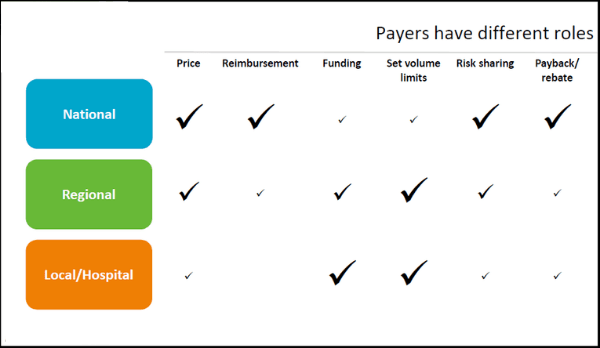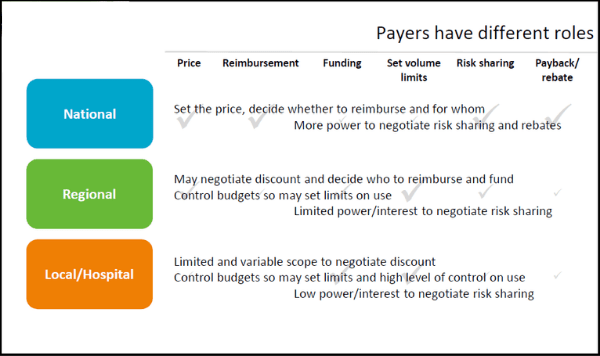By Dr Nick Proctor, expert-trainer of the Understanding Pharma Market Access & Payers in Europe course.
Many pharmaceutical companies still see payers as a barrier, instead of as customers. However, a simple mind shift and a better understanding of the payer can make a big difference.
While it is true that payers often try to limit the use of drugs and/or pay less for drugs, they can have different motivations. There are different categories of payers and it is very important to understand their respective roles and drivers, because that should determine how you deal with them. The key in managing market access is to master the system in each major market, to understand the relative importance of different payer types, and the differences in their decision-making criteria.
There are many ways of categorising payers, with one useful way of understanding them being functional.
National Payers
National payers set the overall rules for reimbursed access to the market. They require data that proves the product is safe, efficacious and, in many markets, cost effective. They can deal with very sophisticated data. Mostly they have a technical and scientific approach. Therefore, consider a greater emphasis on modelling population effects since they want to understand how a new product will affect the system. And do not forget, they may also have political drivers.
Regional Payers
In several countries with decentralisation, regional payers are more important. They can just give guidelines or go as far as developing regional formularies. They are also able to deal with sophisticated data. They want to understand how it will affect their region. Although they do not have responsibility at a national level, regional payers may be quite influential. Politics and regional budget will drive their decision making.
Local Payers
Local payers can be within hospitals as formulary committee members, and in their functions as clinicians, pharmacists and administrators. They tend to be less used to sophisticated data, and to have a greater focus on localised budget impact.
Clinicians and KOLs
Some clinicians and KOLs play a role in all decisions on the product to National, Regional and Local levels, as payers, members of consultative bodies or influencers, such as product and patient advocates. Clinicians and KOLs are primarily interested in how a new product will affect their patients and their budget.
Patients
Patients in some markets and therapy areas will push for specific treatments on the basis of performance and/or cost. In some markets they may be highly sensitive to price as a result of making payments related to the cost of the treatment. In other markets they may be less sensitive, making no payment or a fixed payment that is independent of the cost of the treatment.
To conclude: same story, different message. Keep to the same general story towards the different payers, but use tailored and relevant evidence to support it reflecting the differing needs of the payers making the decision.


